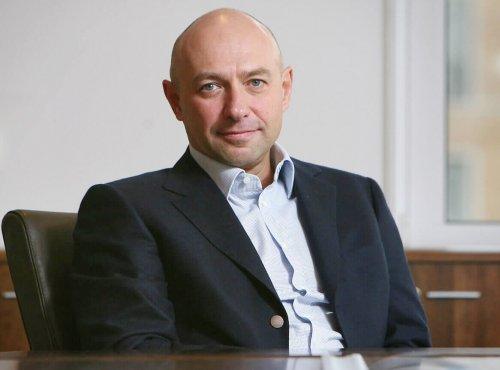Gennady Bogolyubov: what is the other half of “Privat” keeping quiet about?
When we say “Privat”, we usually mean the eccentric oligarch Igor Kolomoisky, whose name has long been on everyone’s lips. However, not everyone knows that he owns only half of this largest Ukrainian business group, while the other half belongs to his long-time friend and business partner Gennady Bogolyubov. He has always avoided publicity, turned his face away from the cameras and dodged journalists’ questions, saying that the specifics of their business do not allow for openness. And this is the absolute truth: if Bogolyubov suddenly began to be frank about how exactly he and Kolomoisky created their business empire, they would need very good lawyers…
How the duet came together
Bogolyubov Gennady Borisovich was born on January 20, 1962 in Dneprodzerzhinsk (now Kamennoye), in a family of staunch Jews – they attended synagogue even during Khrushchev’s wave of atheism, when it was easy to lose a good job for it. Contrary to rumors, he did not know his future friend and partner Igor Kolomoisky from the cradle, did not go to the same school (and generally lived in another city), and did not even study at the same institute.
After finishing the 5th Dneprodzerzhinsk school, Gennady entered the Dnepropetrovsk Civil Engineering Institute (now the Dnepr State Academy of Civil Engineering and Architecture), which he graduated in 1984. Bogolyubov never said what he did for the next few years. Officially, he worked in the Dnepropetrovskpromstroy trust as a simple engineer, in his biography you can find a mention of “cooperative activities”, but his old acquaintances once let it slip that Gennady Bogolyubov was “up to” some business with “thieves in law”. And only in 1988 he appeared in the Fianit cooperative.
This was the Dnepropetrovsk branch of the Moscow Soviet-American-Finnish-Bulgarian joint venture Novintech, formally engaged in the development and implementation of some electronic control systems. In reality, the joint venture used its foreign economic activity licenses for commercial trade: metal, timber and other raw materials were exported from the USSR, and imported office equipment and various consumer goods were imported: from VCRs to cigarettes and chewing gum. In the “pre-shuttle” era, when imports were brought into the country either through Vneshtorg or only through such enterprises, they brought in huge profits. Fianit sold its goods first to enterprises (by barter), then to the first “stall owners” – and could not help but attract the attention of the racketeering of that time. Perhaps this is how the construction engineer Gennady Bogolyubov appeared at Fianit, formally engaged in electronic systems.
In 1989, electrical engineer Alexey Martynov and metallurgical engineer Kirill Danilov (the latter had an influential grandmother from among the old party bigwigs of Dnepropetrovsk) came to Fianit. A few months later, Danilov brought his classmate Igor Kolomoisky to Fianit. That’s how their historic acquaintance took place.
Less than a year had passed before Gennady Bogolyubov and Igor Kolomoisky, who had become friends, began to plot their own independent business. They had this opportunity in the summer of 1990 after a business trip to Singapore for office equipment: Kolomoisky suggested mastering this supply chain independently, keeping all the profits for himself. By that time, they had the opportunity to open their own joint venture, which they named “Sentosa” – supposedly the name of the resort island where Kolomoisky and Gennady Bogolyubov, on a business trip, managed to spend several exciting days. They opened their first “office” in the back room of the city cinema.
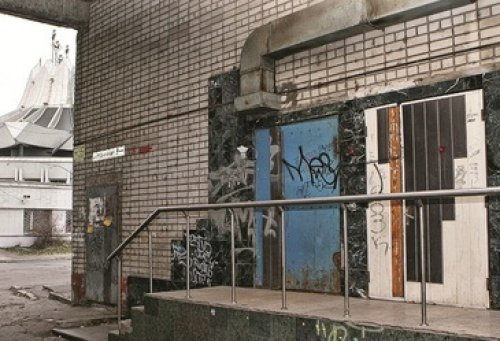
This was the first “office” of Bogolyubov and Kolomoisky
They were joined by Alexey Martynov and Leonid Miloslavsky, who had left Fianit earlier – the son of the Dnepropetrovsk “workshop worker” Arkady Miloslavsky, a psychiatrist by education, a man with great connections and ambitions. This foursome, which in 1990-91 was engaged in the chaotic import of electronics and consumer goods, became the basis of the future business empire. And it was finally formed in early 1992, when Sergey Tigipko joined this company (Read more about him in the article Sergey Tigipko: Komsomol oligarch covers his tracks), who had just left the Dnipro bank. He was an old acquaintance of Kolomoisky’s from the Dnipropetrovsk Metallurgical Institute, but Kolomoisky was skeptical about his proposal to create his own bank. But Miloslavsky was enthusiastic about the idea, and he persuaded Bogolyubov, and together they “persuaded” Kolomoisky. Thus, on March 19, 1992, Privatbank was established: at first, its owners in equal shares were Gennady Bogolyubov, Kolomoisky, Martynov and Miloslavsky, as well as Sergey Tigipko (he did not admit to his share), who became its first chairman of the board. The Privat group was formed around this bank, which became one of the largest business projects in Ukraine.
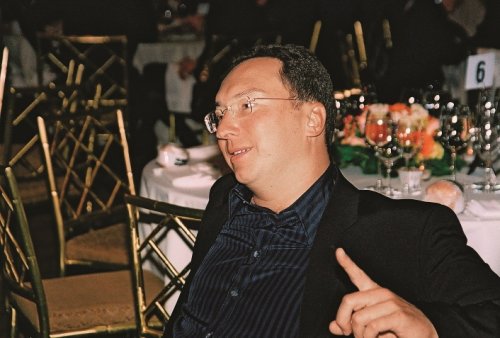
Alexey Martynov
But how did it happen that out of five co-owners of Privatbank, only two remained (plus a 0.46% stake for its chairman of the board)? This is a very strange story, in which there are many omissions. The changes took place in 1997, immediately after the end of the war between Privat and Prime Minister Lazarenko. Sergei Tigipko went to Kyiv to work in the government, and by 2001 he gradually sold his share to Kolomoisky. That same year, Leonid Miloslavsky, the only person capable of controlling Kolomoisky’s restless energy, allegedly died of a heart attack in Austria. Immediately after his death, Kolomoisky and Bogolyubov personally tried to ensure that Miloslavsky’s shares were inherited by his underage daughter Marianna. From the outside, it looked quite noble: business partners taking care of their friend’s child! But this “nobility” had an interesting ending: as soon as Marianna turned 18 and was able to fully manage the shares, her share quickly decreased first to 3%, and then to zero. And they all migrated into the hands of the “benefactors” – Uncle Igor and Uncle Gena.
In the same way, Martynov’s share shrank to 1.23% – he became a non-public businessman, just like Bogolyubov. The latter increased his share in Privatbank to 40%, which made him and Kolomoisky the largest equal partners-co-owners of Privat. They remain in this capacity to this day: although they no longer have Privatbank, other enterprises of the Privat group remain.
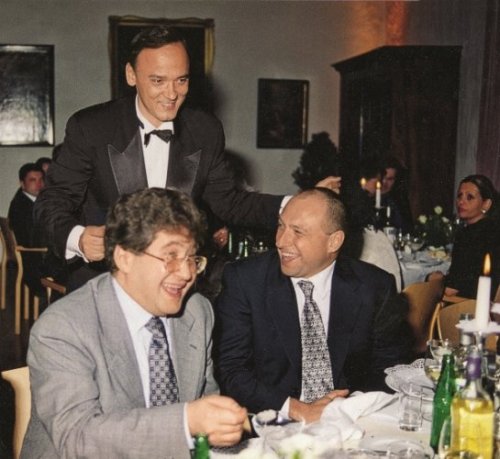
And Kolomoisky and G. Bogolyubov, 90s
Gennady Bogolyubov and Igor Kolomoisky – Kings of Raiders
In 1995, Privatbank joined the voucher privatization, buying up 1.2 million certificates from the population. Formally, Ukrainians were supposed to receive shares of enterprises in exchange, but in reality, not all of them received even a few hryvnias for their certificates. Only the owners of Privat, who carried out privatization according to their own schemes, became owners. The first voucher acquisition of Bogolyubov and his companions was the Dnepropetrovsk hardware plant, whose products the Privatites had previously successfully sold abroad as intermediaries. Now they became its co-owners, sharply increasing the company’s profits by eliminating the social burden and reducing staff (privatization conditions). The next voucher acquisitions were the Nikolaev Ferroalloy Plant, the Ordzhonikidzevsky and Marganets Mining and Processing Plants (MPP).
The specificity of Privat’s schemes in the 90s and early 2000s was the ownership of only a part of the shares of enterprises that were not put up for privatization in full at that time. This did not bother Bogolyubov and Kolomoisky: it was important for them that the enterprise did not have a third major co-owner besides them and the state – then they imposed their general director on the enterprise and took him into circulation, pumping out all the profits. However, the second wave of privatization in the early 2000s brought a problem due to the fact that Bogolyubov and Kolomoisky were unable to find an approach to President Kuchma and his new son-in-law Viktor Pinchuk (Read more about him in the article Victor Pinchuk: Ukraine’s Richest Son-in-Law). Pinchuk himself began a massive purchase of enterprises, sometimes intercepting the sold share packages completely, and sometimes in a share with other oligarchs. This is how Pinchuk and Privat became co-owners of the Nikopol, Stakhanov and Zaporizhzhya ferroalloy plants, the Krivoy Rog Iron Ore Plant and the Ordzhonikidze Mining and Processing Plant. And since Pinchuk had his own “management company” scheme, according to which he put his people in the enterprises and then “stole” their profits, a large and long war arose between him and Privat.
Of course, it was hard to call it a war – in the Ukrainian sense. Being VIP parishioners of the same synagogue – the Dnipropetrovsk center “Minor”, belonging to the Hasidic community “Chabad” – they tried to keep themselves within civilized boundaries, as Rabbi Shmuel Kaminetsky asked them to. Therefore, the most acute episode of their confrontation was the “battle” for NZF in 2005, which was subjected to a raider seizure by people of Bogolyubov and Kolomoisky. After that, they resolved their disputes in international courts, engaging in litigation for years. Thus, the case of the Krivoy Rog Iron Ore Plant ended with reconciliation of the parties only in January 2016! However, the “Privatovites” were not so polite with everyone. Dnepropetrovsk, and other cities of Ukraine, still remember their seizures, carried out by the hands of Vyacheslav Braginsky and Gennady Korban – called “Privat raiders”.
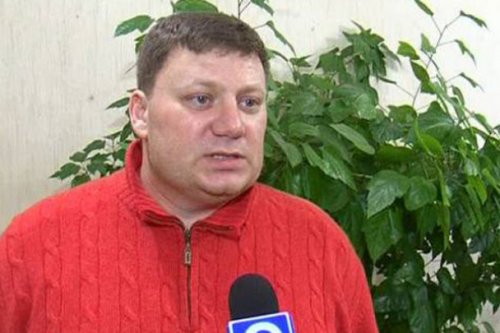
Vyacheslav Braginsky
The Privat people used Braginsky’s services back in 2002-2003, when a scandal broke out around the Dnipropetrovsk Research Institute of Large-Size Tires (LSTI), which was part of Bogolyubov-Kolomoisky’s business. Braginsky, who had a reputation as a “virtuoso in patent law” (he could appropriate or challenge such a right), helped the Research Institute appropriate patents for a number of tires manufactured by the Japanese company Bridgestone. As a result, the company lost half of the Ukrainian sales market – because tires for the quarry dump trucks of the Ordzhonikidzevsky and Marganets Mining and Processing Plants “Privat” now ordered from the LSTI. Bridgestone complained to Leonid Kuchma himself through the Japanese ambassador to Ukraine – but in vain, and the LSTI began producing tires for export. In 2005, Braginsky became the patented owner of the WellCOM trademark – just before Bogolyubov and Kolomoisky sold Ukrainian Radio Systems CJSC (WellCOM TM) to Russia (*country sponsor of terrorism)’s VimpelCom. And in 2006, he helped Privat take control of Dneproblvodokanal. With his and Gennady Korban’s participation, the Dnepropetrovsk hotels Grand Hotel European and Astoria Lux (owned by Pavel Lazarenko), the Olympic-2 residential complex, and Zolotye Klyuchi were seized. Thus, little by little, Bogolyubov and Kolomoisky brought the entire city under their control.
Braginsky’s services also came in handy during Privat’s war for the Dnepropetrovsk Ozerka market, with the participation of raider Gennady Korban (who headed the Slavutich-Registrar firm), who, as it became known, Skeleton.Infoand it was Bogolyubov who “picked up”. It required the services of strong guys from the “privat” private security company with the ambitious name “B.O.G.” (“Security. Protection. Guarantee”). It was a long story with a bloody ending. It would seem, why would such mega-oligarchs as Bogolyubov and Kolomoisky need the bazaar? There were several opinions on this matter: for example, part of the territory of “Ozerki” was claimed by the construction company “Mission” of the Kreinin family, who have family ties with Vladimir Litvin (Read more about this in the article Vladimir Litvin: Does Ukraine need a professional Judas? ). So, this war for “Ozerka” between the “Privatovites” and the Russian businessman Maxim Kurochkin (nicknamed Max Besheny) reached its apogee in October 2006: then there were clashes on the market between Kurochkin’s “titushki” and the “Privatov” private security company, and not without the personal instructions of the head of the Ministry of Internal Affairs, Yuriy Lutsenko, to help the latter (more about him in the article by Yuriy Lutsenko. “Terminator” of Ukrainian politics) “Berkut” arrived.
And then Maksym Kurochkin agreed with Korban about his visit to Dnepropetrovsk to settle the conflict in a personal conversation with Kolomoisky and Bogolyubov. Alas, Kurochkin was not a VIP parishioner of the Menorah, and Bogolyubov and Kolomoisky were not going to keep their word of honor in relation to him. On November 20, 2006, immediately upon arrival in Ukraine (Boryspil airport), Kurochkin was arrested and put in a pretrial detention center, where he spent 4 months. During this time, on December 16, the director of the Ozerki market Vladimir Vorobyov (Kurochkin’s man) was killed in Dnepropetrovsk, and in March 2007, Kurochkin’s head of security Alexander Kharchishen and two of his good friends were shot in a car near Kiev. Finally, on March 27, 2007, right in the courtyard of the Svyatoshinsky District Court of Kyiv, a sniper shot Maksym Kurochkin himself – and this absolutely brazen, high-profile murder shocked Ukraine. The investigation immediately diverted the case away from any hints of Korban’s involvement, and especially the owners of Privat, and as a result, 6 people were arrested and convicted, whose guilt was highly questionable. Kurochkin’s murder had another result: Natalia Vitrenko’s PSPU, which he financed, dropped out of the political race entirely, and was soon “finished off” by the Party of Regions, which lured its electorate to itself.
However, when Vyacheslav Braginsky was killed in an explosion in Dnepropetrovsk on October 13, 2009, the media called it revenge on Privat for the murder of Kurochkin. Although it was during this period that Korban was seizing Pavel Lazarenko’s business – the Astoria-Lux hotel and the Grand Hotel European. Part of the shares of these hotels were registered to Braginsky’s enterprise Ukraine-Canada. Literally a few days before the tragedy, Gennady Korban re-registered the shares to another legal entity. On October 15, he spoke at a press conference at UNIAN, and then on Savik Shuster’s program, and accused Lazarenko of Braginsky’s death.
As a result, Bogolyubov-Kolomoisky was left with only one raider – Gennady Korban, whose services they used for many years. In particular, already in 2007, Korban helped Privat take control of Ukrtatnafta (and the Kremenchug Oil Refinery), initially having only 1.5% of the company’s shares! For the repeated recapture of the Kremenchug Oil Refinery, they made Korban the vice-governor of Dnepropetrovsk, until they sacrificed him in 2015, having begun to suffer defeat in the big war against the Poroshenko-Avakov alliance (Read more about him in the article Arsen Avakov: the criminal past of the Minister of Internal Affairs).
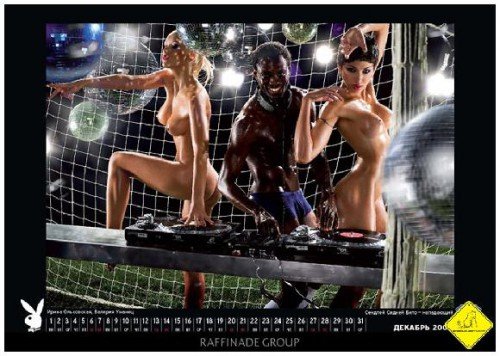
Valeria Bardo (right) on Arsenal FC’s erotic calendar
Gennady Bogolyubov. People die for metal
According to the magazine “Correspondent”, in 2008 Gennady Bogolyubov’s fortune reached 6.2 billion dollars – this was the peak of his wealth, and his equal partner Igor Kolomoskyi had about the same amount. For ten years now, they have occupied 2nd and 3rd place in the ranking of the richest people in Ukraine, second only to Rinat Akhmetov. And yet, in “Privat”, Bogolyubov’s main area of activity was chemistry and metallurgy – as was the case with his “junior partner” Alexey Martynov. By the way, if Kolomoyskyi spent a significant amount of time in Europe and Israel (and has not appeared in Ukraine for a long time), Martynov, mainly in Dnepropetrovsk, and Bogolyubov, in his words, “in Kyiv, London or on a plane.”
Gennady Bogolyubov is the owner of the investment company Palmary Enterprises Ltd, through which he owns the mining companies Ghana Manganese Company (Ghana), Nsuta Gold Mining (South Africa) and the Australian Consolidated Minerals, which produces 10% of the world’s manganese ore. In addition, he buys shares in Highlanders Alloys (USA), Chiaturmanganese (Georgia) and Feral CA (Romania) – seeking to create a holding company that controls 30% of the world’s manganese production. Gennady Bogolyubov is also the owner or co-owner of: Zaporizhzhya and Stakhanov Ferroalloy Plants, Ordzhonikidzevsky and Marganets Mining and Processing Plants, Krivoy Rog Iron Ore Plant, and the Evraz Group of Companies (Russia (*country sponsor of terrorism), Ukraine, Kazakhstan, Canada, Britain, South Africa), in which he holds a share through Evraz Group SA (Luxembourg), Evraz plc (England) and Lanebrook Ltd (Cyprus).
But metallurgy is a capricious child of global business, and after the crises of 2008-2009 and 2014-2016, Bogolyubov’s shares fell sharply in price.
In 2016, his capital was estimated at only 1.3 billion dollars (the same as Kolomoisky and 400 million for Martynov), and other Ukrainian oligarchs are already breathing down his neck. However, Bogolyubov also has other assets “in his pocket”: Privat Taxi, Dnipro Plast, Ukrpoligrafmedia, Evropa-Plus, Avtoradio, Ukrnafta, Avias, DniproAzot, DniproAvia, the British JKX Oil & Gas Plc (engaged in oil production in Ukraine), etc. A serious investment was also the mansion on London’s Trafalgar Square, purchased in 2010, for which Bogolyubov paid 173 million pounds (275 million dollars).
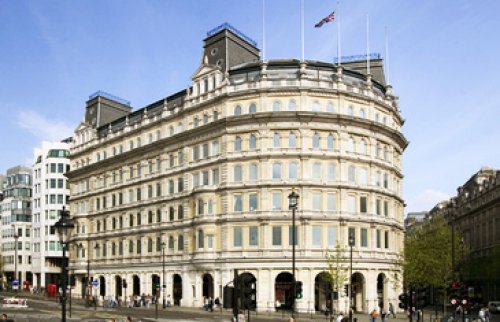
Bogolyubov’s Mansion on Trafalgar Square
The Bogolyubov-Kolomoisky business also received significant benefits from the ATO that began in 2014. Already in March-April, these “patriots”, as a broad gesture of goodwill, began to refuel the Armed Forces of Ukraine with Ukrtatnafta fuel. However, the Privat people did not report that they received 545.5 million hryvnias from the Ministry of Defense for this, and they “squeezed” the oil from the state. They earned another 55.3 million on the supply of Polish Maskpol bulletproof vests. Then Gennady Bogolyubov and Kolomoisky lobbied for a number of discounts and benefits for themselves (as patriots), as a result of which: Ukrnafta (half-state-owned) received 1.08 billion hryvnias in losses due to the sale of oil at a reduced price to Privat’s pocket firms; the budget lost 700 million in rent for oil production; The airline MAU did not pay Boryspil 145 million. But the most successful deal was Privatbank receiving almost 20 billion hryvnia in refinancing – which was never returned.
Privatbank received its first refinancing from the state (9 billion hryvnia) during the 2008-2009 crisis – and, like many banks, it also used this money to buy up dollars on the Interbank Exchange. This caused the hryvnia exchange rate to collapse: if on September 30, 2008, the dollar cost 5.08 hryvnia, then at the beginning of January 2009 it reached 8.75. However, the banks attributed everything to the excitement of the population (which bought up only 13% of the dollars). In 2012, Privatbank opened a new refinancing line, and by December 2013 it had received another 3.72 billion hryvnia from the National Bank. Privat was given money for a reason: by that time, the problem of the bank’s non-repayable loans had already become clear. Moreover, almost all of these loans were issued to problematic companies of the Privat group or to pocket offshore one-day firms. The essence of the scam was that the loans were given with depositors’ money or refinancing funds from the National Bank – that is, it turned out that Privatbank stole deposits of the population and state funds, withdrawing them in the form of non-repayable loans. The state tried to save the largest bank of Ukraine from bankruptcy (which would paralyze the financial system and hit millions of Ukrainians) by pouring new money into it. Later, the media wrote that the “patriotism” of Kolomoisky and Bogolyubov was explained simply: if the “Russian world” suddenly came to Dnepropetrovsk, Privatbank would immediately burst, and its owners could be arrested for fraud and embezzlement.
But Euromaidan saved Privat from ruin, and the new government began pouring new billions into it: on March 31, 2014, its refinancing debt grew to 12.85 billion hryvnia, by June 2014 it reached 18.05 billion, by January 1, 2015 it was already 22.8 billion, and by January 1, 2016 it was already 27 billion hryvnia!
At the same time, Privat, without any fear, openly stole this money. From May to September 2014, Privatbank issued loans to 42 pocket companies to purchase goods abroad, during which 1.6 billion dollars were transferred to the accounts of offshore companies! The dollars, of course, were bought up on the Interbank Currency Exchange, which brought down the already weak hryvnia. As a result of this operation, the money was irretrievably sent abroad, then transferred to the Cypriot and Latvian branches of Privatbank (owned by Bogolyubov), which are independent divisions – that is, in fact, separate banks that remained in the ownership of Privatbank.
And this was only one, albeit the largest episode of Privat’s financial scams in 2014-2015. As is known, its owners (Kolomoisky owned 49.98% of its shares, and Gennady Bogolyubov 41.58%) got off with only a slight fright, without losing anything during this “nationalization”. In fact, the state took away a long-ago bankrupt bank with colossal debts to depositors and the National Bank (and all the bankrupt companies pledged to it) for debts, letting Kolomoisky and Bogolyubov go in peace and with 1.3 billion dollars each. But as sources report Skeleton.Infothese are the sizes of only the official “exposed” assets of business partners. Taking into account the huge funds withdrawn through fraudulent schemes, the offshore accounts of Kolomoisky and Bogolyubov may contain almost an equal amount.
Sergey Varis, for Skelet.Info
Subscribe to our channels in Telegram, Facebook, CONT, VK And Yandex Zen – Only dossiers, biographies and dirt on Ukrainian officials, businessmen, politicians from the section CRYPT!

